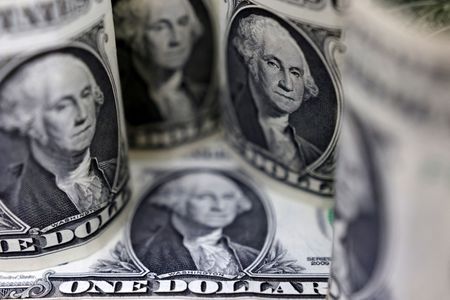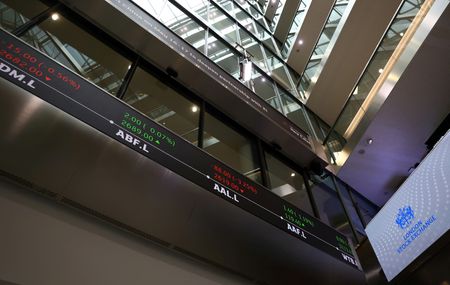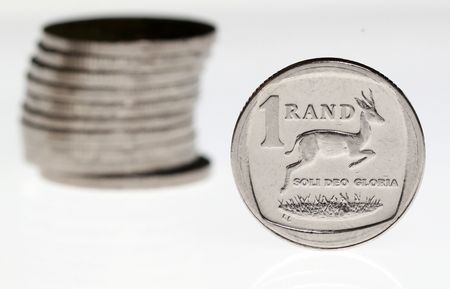JOHANNESBURG (Reuters) -The South African rand continued to plunge lower on Monday, under pressure from a strong dollar as a wave of risk aversion swept through global markets.
With the war in Ukraine entering a third month and growing concerns of a China-wide COVID-19 outbreak, investors dumped currencies that had been in favour like the Australian dollar, offshore Chinese yuan and rand.
At 1430 GMT, the rand traded at 15.7700 against the U.S. currency, down around 0.9% from its Friday close and at its weakest in more than three months.
Monday’s decline extended last week’s rand losses, when the South African unit lost over 6% against the dollar in a sharp reversal in sentiment, as concerns that power cuts and devastating floods would throttle economic growth came to the fore.
“With a gloomy start to the post-Easter week for markets the rand has weakened materially, although it will likely stabilise into month end once markets have digested the recent slew of risks. Currently, we still expect the rand to average R15.20/USD this quarter,” Investec’s Chief Economist Annabel Bishop said.
Stocks also weakened alongside global stocks, with commodity shares taking the biggest hit from risk aversion.
The Johannesburg All-Share index shed 3.48% to end the session at 69,750 points, while the Top 40 index tumbled 3.81% to 62,895 points.
“Stock markets have been hit by a double whammy, with the hawkish sentiment regarding the Fed and increased COVID cases in China hitting them hard,” said Andre Cilliers, Currency Strategist at TreasuryONE.
Fears grew that Beijing may impose harsh restrictions to control the spread of the virus after a lockdown in Shanghai, China’s financial hub, dragged into a fourth week.
China is one of South Africa’s largest and most significant trading partners and a major investor.
Commodity stocks tumbled with Anglo American, Sibanye Stillwater BHP Group, petrochemicals firm Sasol, Anglo American Platinum and Glencore down 7.46%, 6.48%, 6.36%, 6.11%, 6.04% and 5.72% respectively.
China’s lockdowns soured the demand outlook for palladium as prices fell nearly 13% on Monday, while looming U.S. interest rate hikes took the shine off gold. Other commodities like oil, iron ore and platinum also dived. [GOL/][O/R]
The government’s benchmark 2030 bond also fell, with the yield rising 5.5 basis points to 9.910%.
(Reporting by Alexander Winning and Nqobile Dludla, editing by Mark Heinrich)










